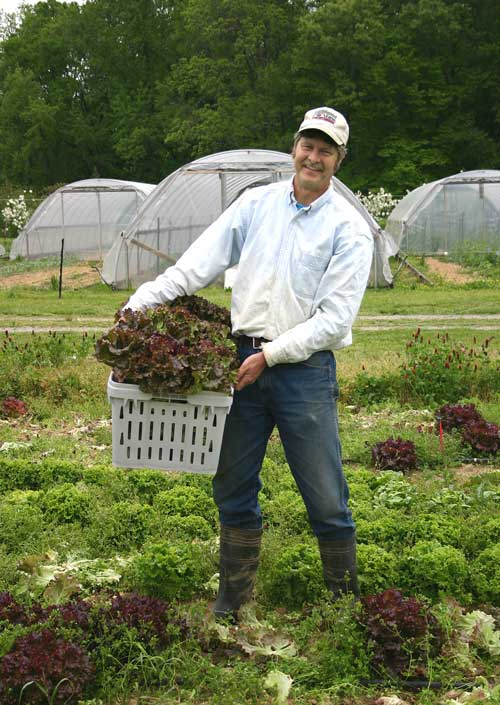“There becomes two schools of practice in sustainable agriculture when it comes to annual crop production, extensive and intensive. The ‘extensive’ farmers we know basically have two farms, one in cover crops and one in cash crops flipping them each year or so. This allows them to rest the soil and build organic matter but also means they have to have twice as much land, a luxury most farmers don’t have, like us. The other end of the spectrum is no cover crops and to just rely on organic matter sources imported onto the farm- manure, leaves, hay, compost, etc. Not only more expensive and labor intensive but in many ways not as biologically diverse which can lead to a less stable/sustainable system.”
If you're interested in sustainable vegetable production in the South, then you need to know Alex Hitt.
Hitt and his wife, Betsy, own Peregrine Farm outside of Chapel Hill, North Carolina. Farming organically since 1980, they have pioneered the local food movement in Southeast and become leading experts in the operation and maintenance of sustainable production systems. While Betsy handles the cut-flower side of the business, Alex grows vegetables--in addition to speaking regularly at regional conferences and thoughtfully blogging on the technical details of growing specialty crops without synthetic chemicals and large off-farm inputs.
In a recent post he covered the thorny subject of implementing crop rotations with limited space: specifically, how to balance a cover cropping and rotational strategy with year-round demand for market crops. "We currently have 5 quarter acres blocks that we are now trying to fit nearly 9 quarter acres worth of crops into and another 4 of cover covers crops, not easily done," Hitt says. His answer is to expand his current five-year rotation, which rebuilds soil and breaks disease and pest cycles, into a less elegant six-year plan.
Hitt is even generous enough to share his schematic for one bed (see below). Read the entire post here. Note: blocks in green are cover crops.
Six-year rotation for a single bed: http://peregrinefarm.net/2014/06/20/peregrine-farm-news-vol-11-15-62014/.

